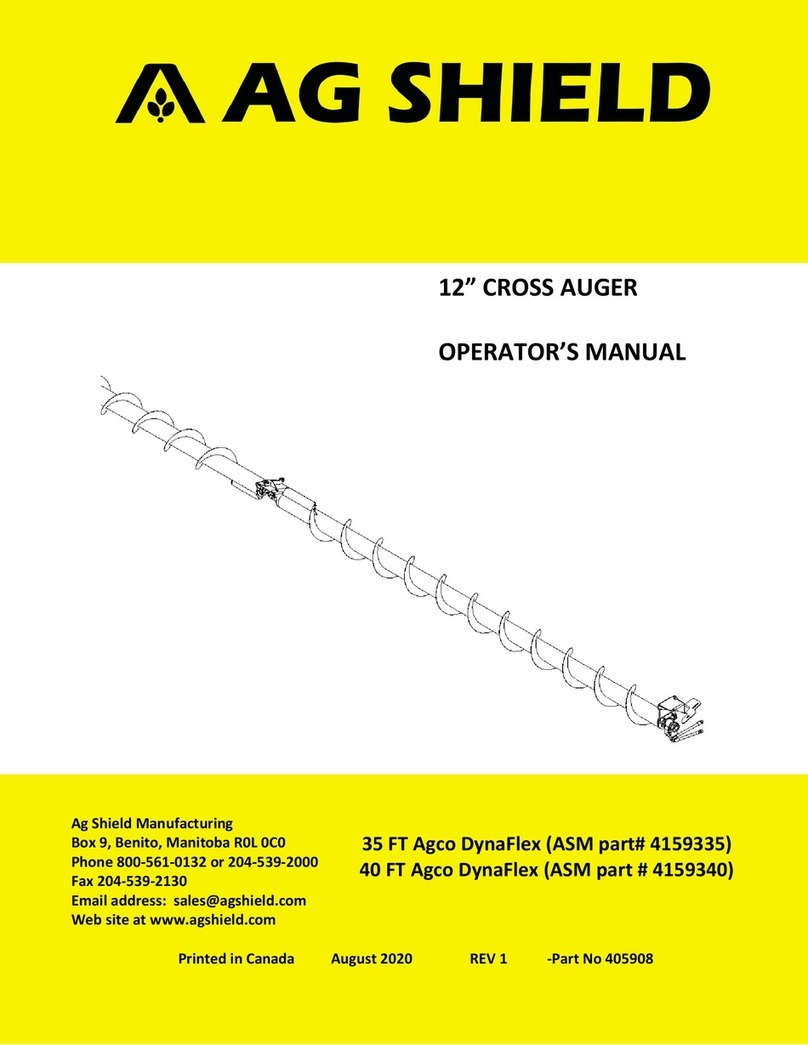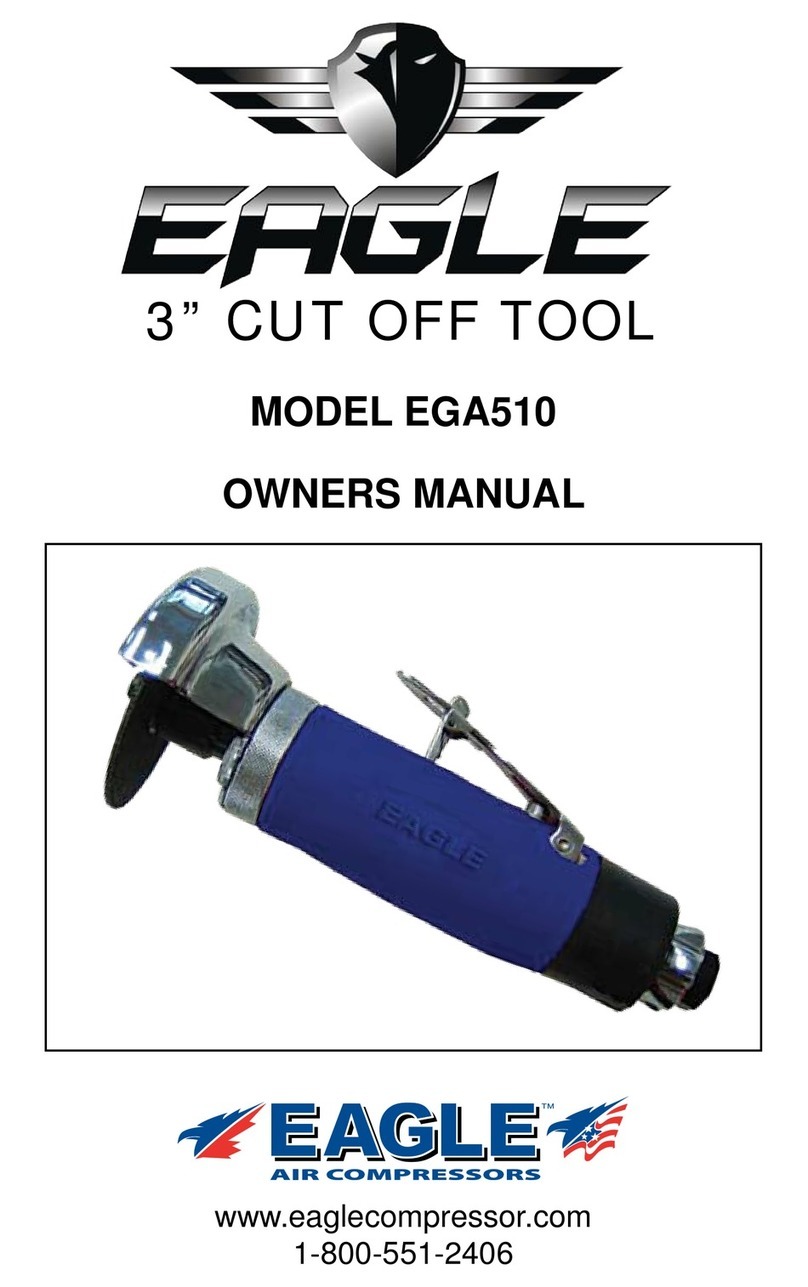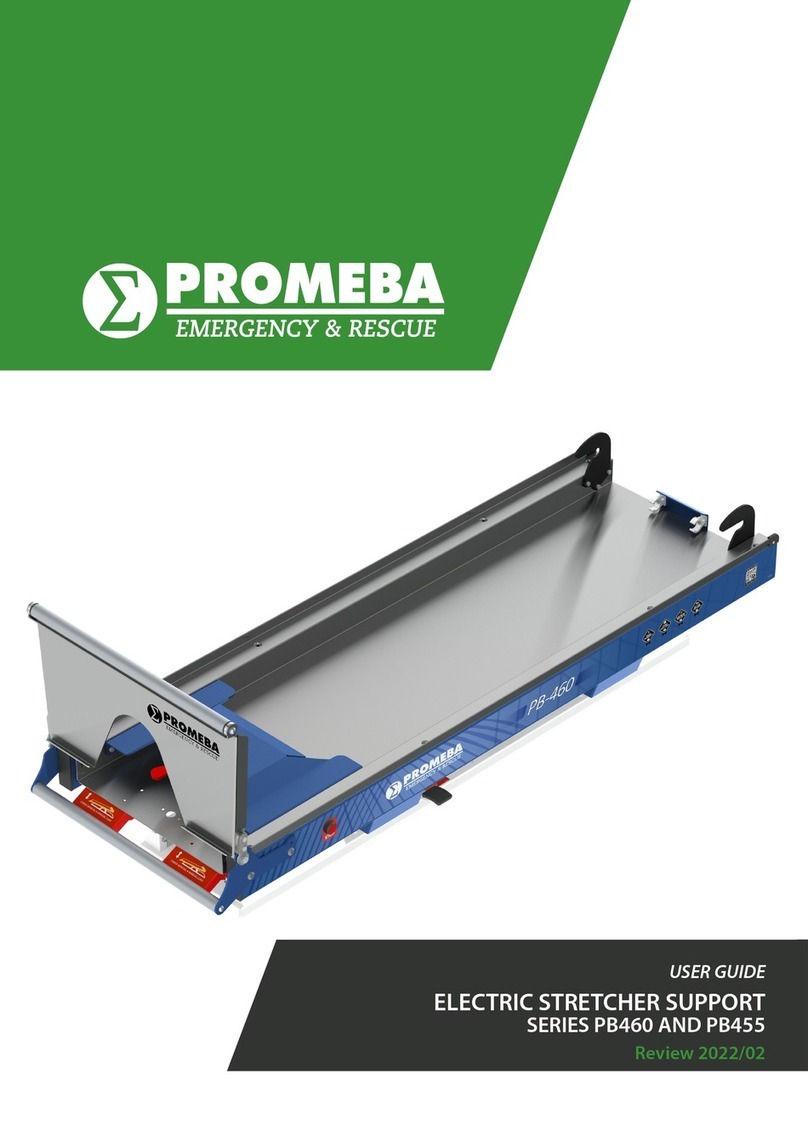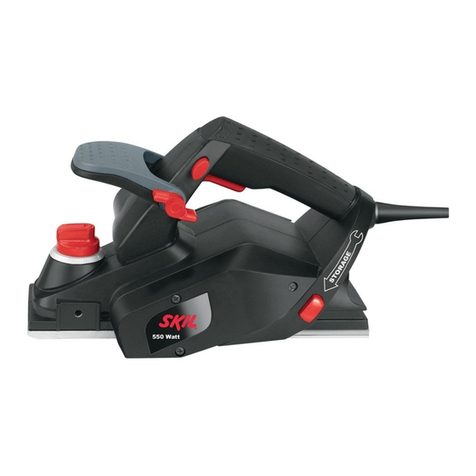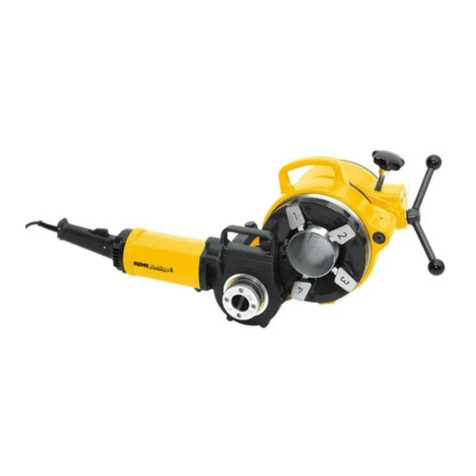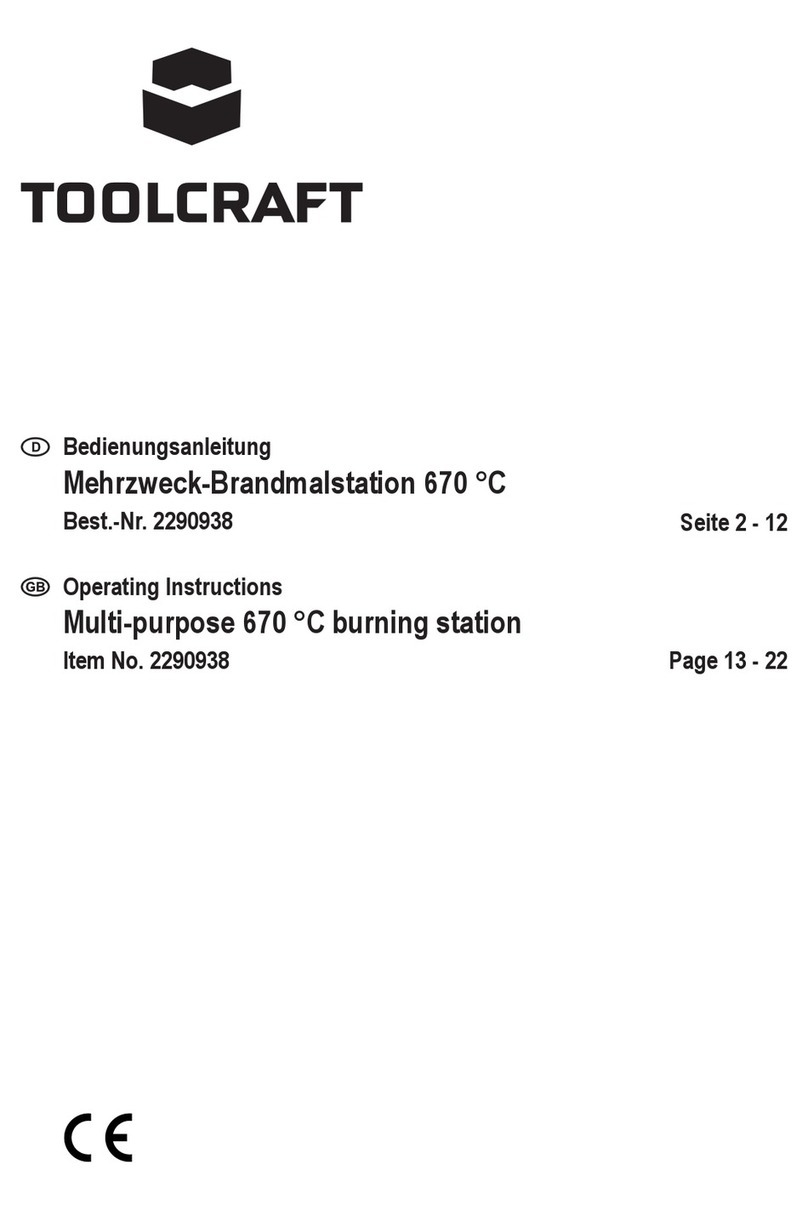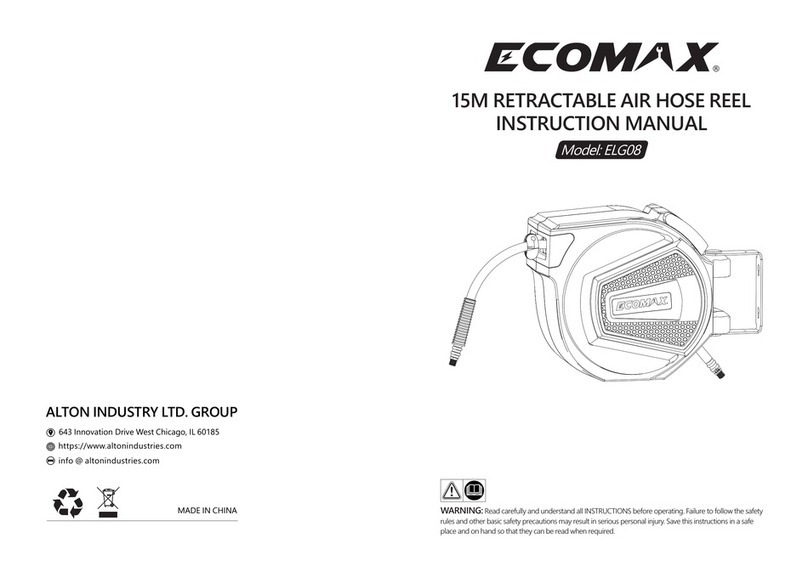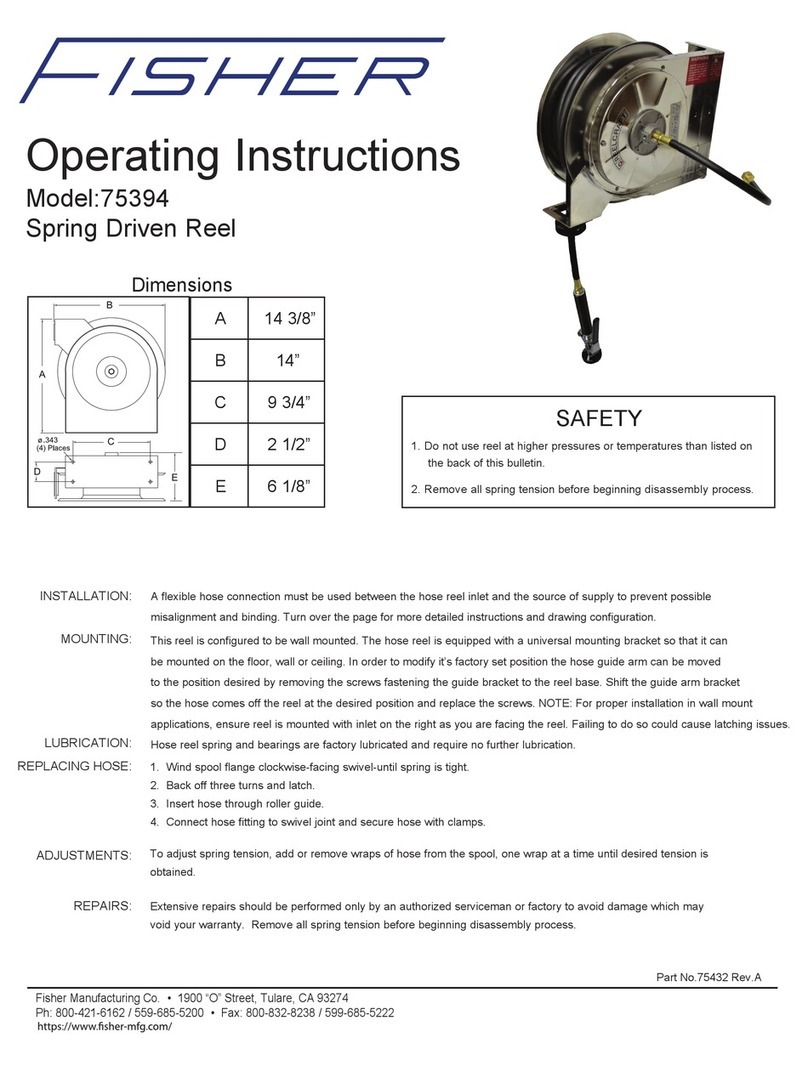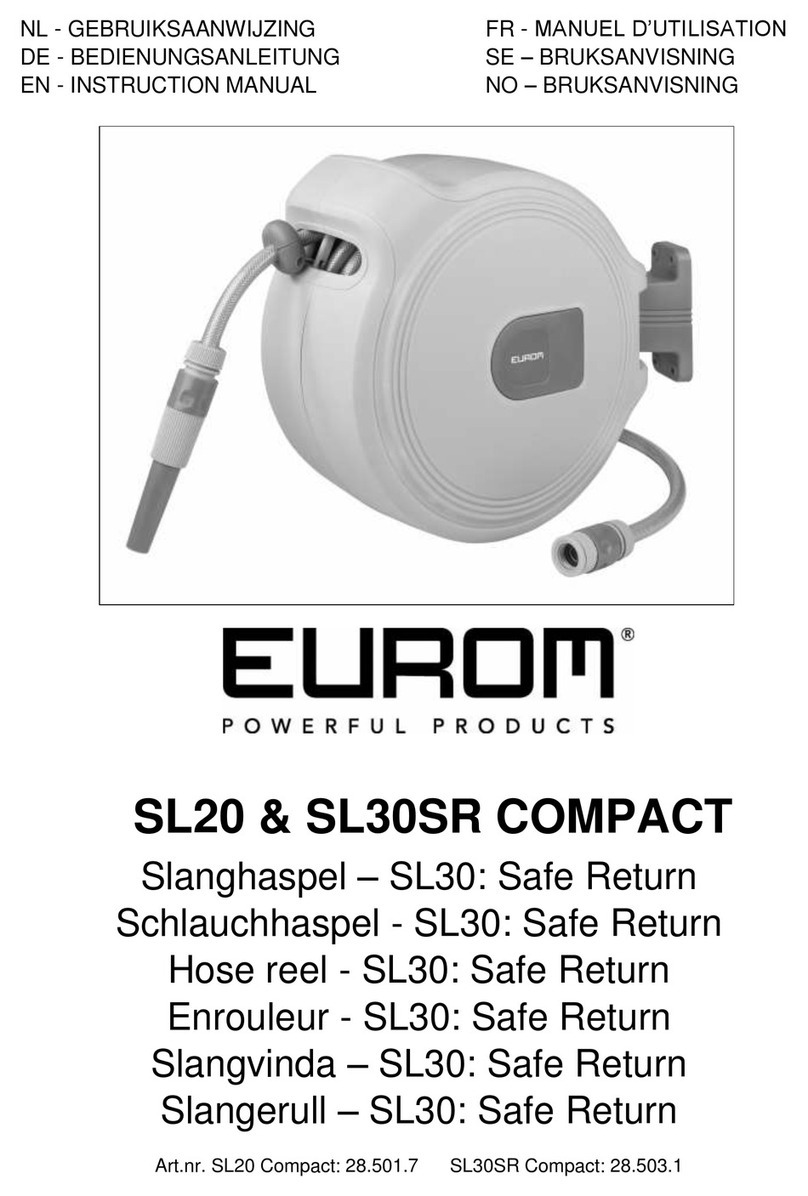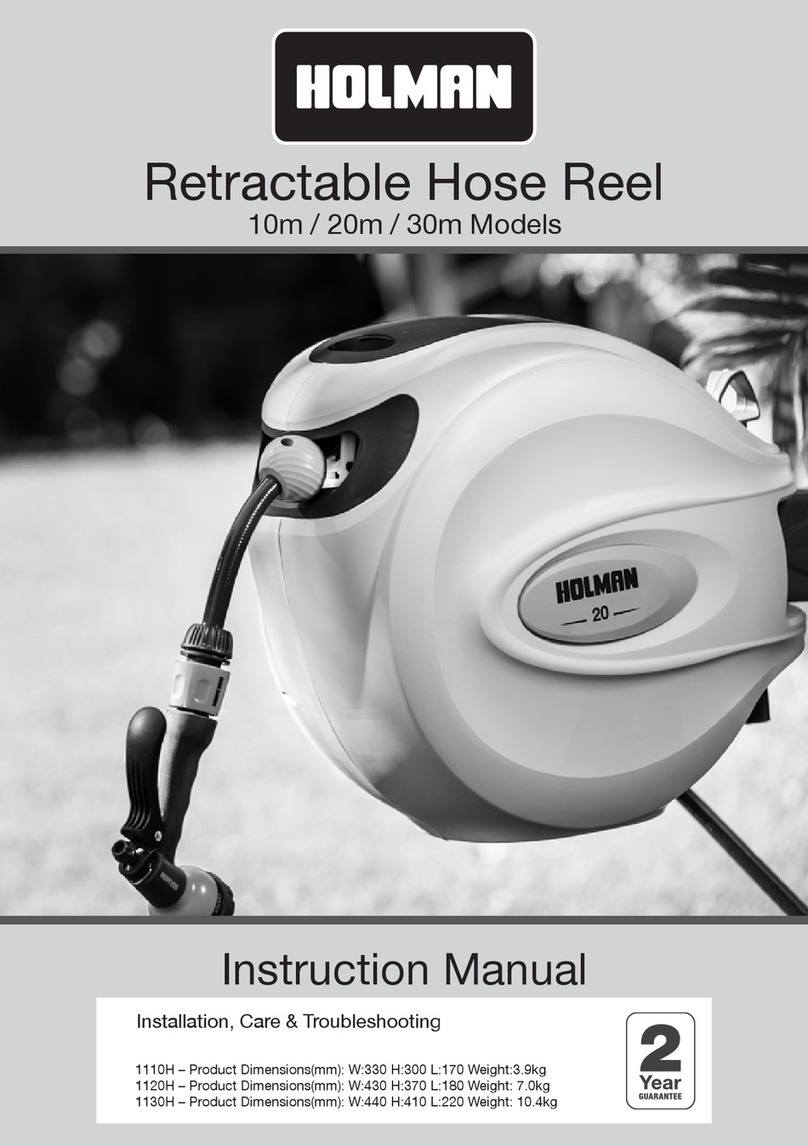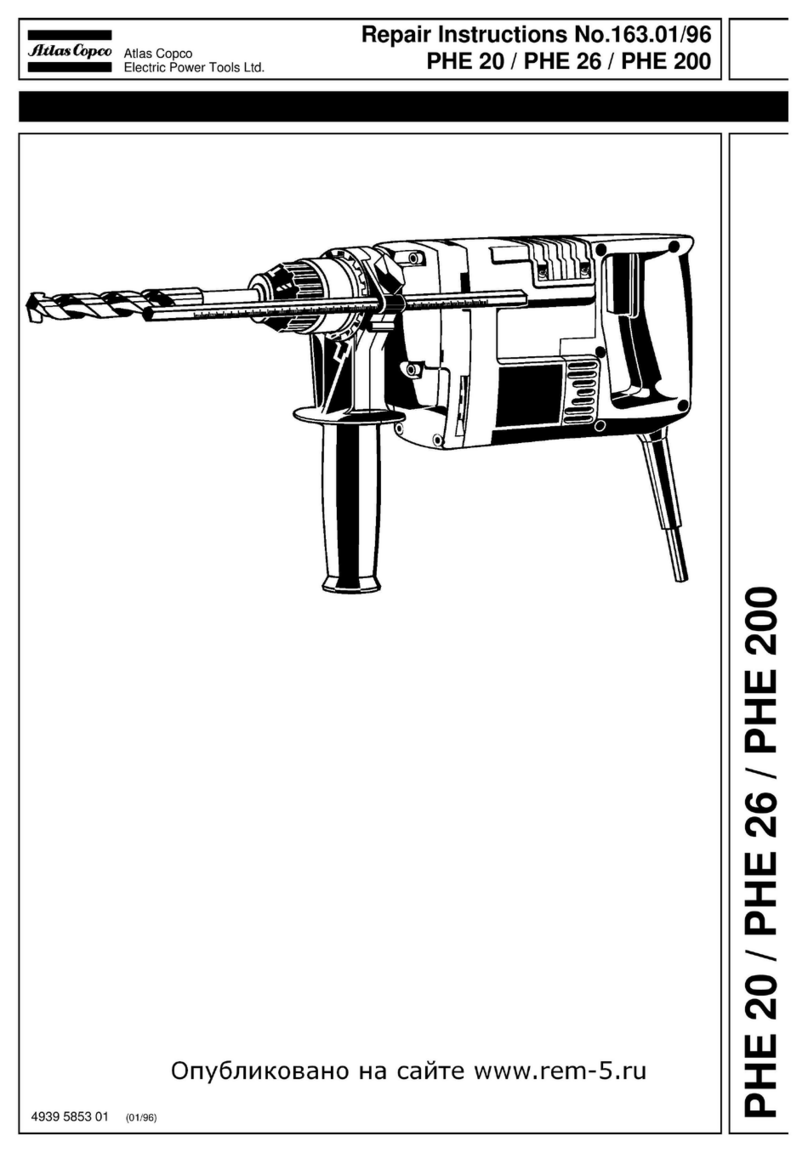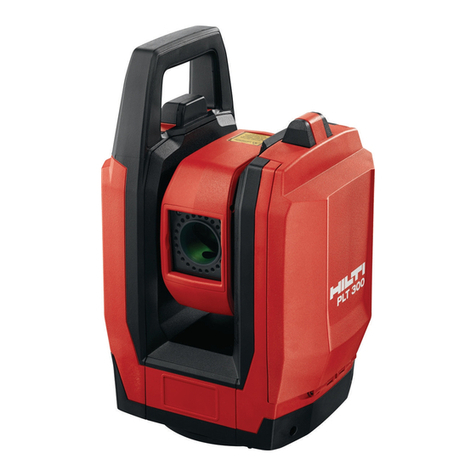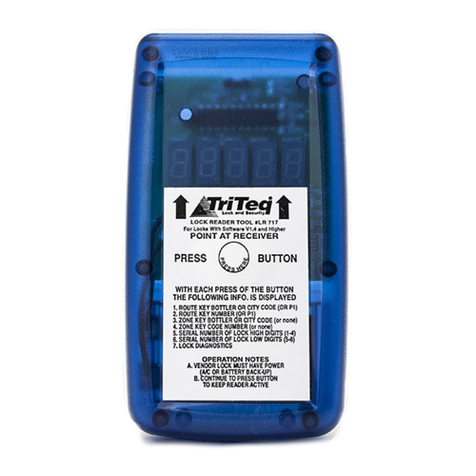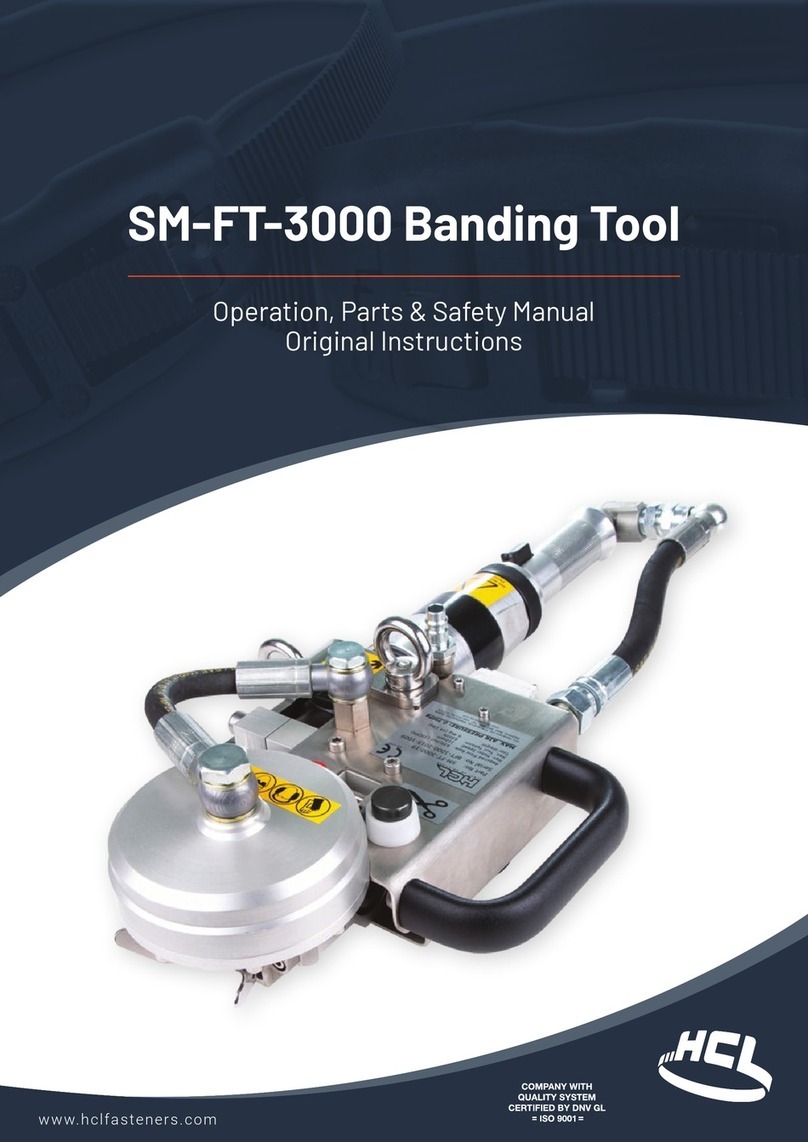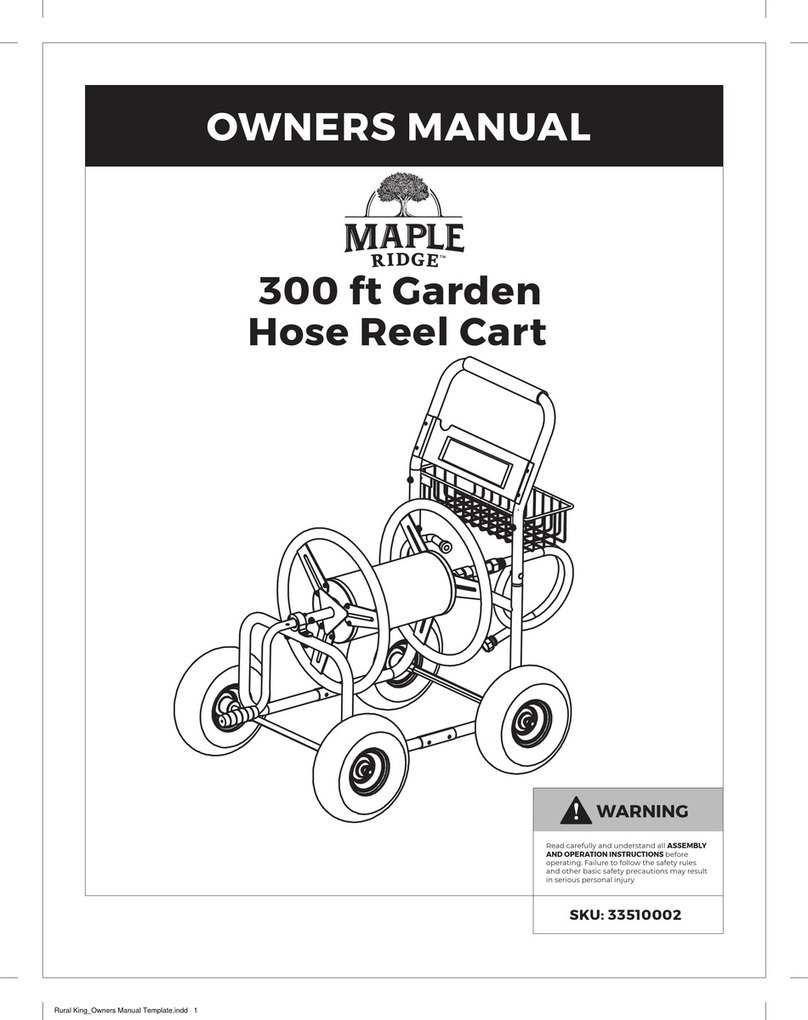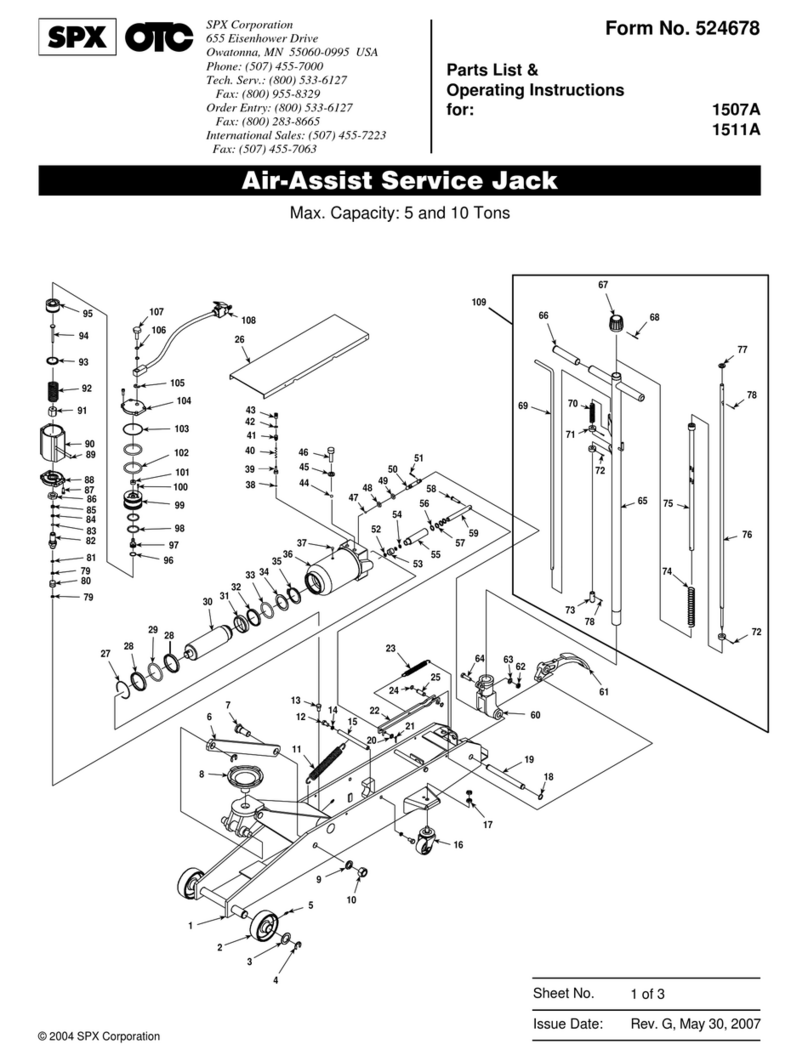BISSETT BT-CNR45 User manual

USER MANUAL
SAFETY/OPERATION
MAINTENANCE/TROUBLESHOOTING
Located on the tool housing are the model and serial numbers
of your tool, please record these.
Model Number:
EC Machinery directive – EN 792-13
ANSI SNT — 101
Serial Number:
IMPROPER AND UNSAFE USE OF THIS TOOL MAY RESULT IN DEATH
OR SERIOUS INJURY. IT IS VERY IMPORTANT THAT THE INTENDED
OPERATOR OF THIS TOOL READS AND UNDERSTANDS THIS MANUAL
BEFORE OPERATING THIS TOOL. KEEP THIS MANUAL AVAILABLE
FOR OTHERS BEFORE THEY USE THE TOOL.
IMPORTANT:
BISSETTFASETENERS.CA

TABLE OF CONTENTS
Important Safety Instructions............................... 1
Compressed Air System................................... 3
Operating Instructions .................................... 4
Maintenance........................................... 12
Troubleshooting when due to damage....................... 13

1. IMPORTANT SAFETY INSTRUCTIONS
It is the customer’s responsibility to give this manual to the person
intending to operate this tool, and to make sure that it is read
carefully and understood completely by that person. Do not use the
tool or allow others to use the tool until all safety instructions have
been read and understood. The customer is responsible for enforcing
the use of safety protection equipment by the tool operator and all
other personnel in the work area.
• Always use the tool only for the intended purpose for which it
was designed.
• Use safety glasses: all persons in the work area must
ALWAYS wear safety glasses complying with ANSI Z87.1/EN
166withFRONTandSIDEprotectionagainstyingobjectin
ordertopreventeyeinjuries.
• Use head protection complying with ANSI Z89.1.
• Use ear protection to prevent possible hearing loss.
• Use clean dry regulated compressed air at the
recommended pressure (given in the technical data).
• Use only Bissett parts and fasteners (refer also to the
technical data). Using unauthorized parts and fasteners may
resultindamageandinjury.Theuseofnon-genuineBissett
parts and fasteners may void your warranty.
• Never exceed the maximum recommended operating
pressure of the tool.
• Never use oxygen, carbon dioxide, combustible gases or any
bottled gas to operate the tool.
• Always disconnect the air supply when loading fasteners,
doinganytoolmaintenance,cleaningajam,movingwork
locations, leaving the work area or passing the tool.Do not
assume that the tool is empty of fasteners.
• Always disconnect the tool from the air supply when not in
use or when the tool is being left unattended.
1

• Regularly inspect the safety, the trigger and the springs
for free unhindered movement, never use a tool that
requires servicing.
• Connectthemalefreeownippletothetoolsideoftheair
supply so that the tool is depressurized when disconnected
from the hose. Never install female quick disconnect
couplings on the tool, as this may trap air in the tool when
disconnectedandresultinafastenerbeingred.
• Never load fasteners with the triggering device depressed as
thismayresultinafastenerbeingred.
• Never carry the tool with the safety depressed as this may
resultinafastenerbeingred.
• Never tamper with, modify or permanently engage the
triggering device.
• Never point the tool at yourself or at anyone else. The tool is
not a toy. Do not engage in horseplay with the tool.
• Neverreafastenerintoahard,brittlesurfacesuchas
concrete, steel or tiles.
• Do not drive fasteners too close to an edge or at too great an
angleasthefastenermayyfreeorricochetcausingpersonal
injuryanddamage.
• Always ensure that the work area is amply lit so as to avoid
possibleaccidentscausedbyinsucientlighting.
• Never remove, tamper with or otherwise cause the tools
operating controls to become inoperable.
• Dress properly.Donotwearlooseclothingorjewelryasthey
canbecaughtinmovingparts.Rubberglovesandnon-skid
footwear are recommended when working outdoors. Wear
protective hair covering to contain long hair.
2

2. COMPRESSED AIR SYSTEM
Proper use of the tool requires an adequate quantity of clean dry
compressed air.
All compressed air contains moisture and other contaminants that
may be detrimental to the tool, so it is recommended to use an
airsupplylterregulatorlubricatorasclosetothetoolaspossible
(within4.5meters/15feet).Theltershouldbewellmaintainedsoas
to ensure optimum performance and power. All parts of the air supply
system should be clean and contaminant free.
The tool shall only be connected to a compressed air supply where
the maximum allowable pressure of the tool cannot be exceeded by
a factor of more than 10%. This can be achieved, for example, by a
pressure reduction valve which includes a downstream safety valve.
Amalefree-owcouplingshouldbeconnectedtothetoolsideof
the system with the female coupling providing a seal to prevent air
loss from the compressor tank upon disconnection. Never connect
a female disconnect coupling to the tool side as this may trap air in
the tool when the air supply is disconnected, leaving the tool charged
andcapableofringafastener.Donotmountaswivelconnectorin
the air supply line.
Dierentworkpieceswillrequiredierentoperatingpressures.Never
exceed the maximum recommended operating pressure of the tool
as indicated on the tool.
Warning: Keep hands, body and loose clothing and jewelry away
from the discharge area of the tool when connecting the air supply
and always disconnect the tool before loading, servicing, adjusting,
cleaning and when the tool is not in use.
3

3. OPERATING INSTRUCTIONS
3.1 LOADING FASTENERS
Refer also to the technical data.
3.1.1 SIDE LOADING MAGAZINE
Open the magazine cover, load the fasteners, and close
the magazine.
3.1.2 REAR LOADING MAGAZINE
For 2 step type, slide the fasteners into the magazine and pull
the pusher until it is behind the fasteners. Then release the
pusher and ensure its proper engagement on the fasteners.
For 3 step type, pull the pusher to the back and keep it on the
latch mechanism. Load the fasteners and release the pusher.
3.1.3 TOP LOADING MAGAZINE
Pull the pusher to the back of the magazine and keep it on
the latch mechanism. Load the fasteners, then release the
pusher and guide it to the fasteners. Never allow the pusher
to snap back towards the fasteners as it will damage the
pusher spring.
3.1.4 BOTTOM LOADING MAGAZINE
Push the release, catch and then slide back the magazine.
Load the fasteners into the magazine cover. Then slide the
magazine back closed.
Warning: Point away the nozzle when loading or unloading the
fasteners. Always disconnect the air supply before loading fasteners.
4

3.2 GENERAL OPERATING INSTRUCTIONS
3.2.1 TYPES OF ACTUATING AND TRIGGERING SYSTEMS
FOR TOOLS WITHOUT A CONTACT SAFETY:
Single action actuation: The tool contains an actuating
system where the triggering device has to be actuated for
each driving operation.
Single action with simple safety: The tool contains a safety
latch that is built into the triggering device enabling the user
to disengage it when it is not in use.
FOR TOOLS WITH A CONTACT SAFETY INSTALLED:
Dual action safety/contact safety
(contact actuation): It will be necessary to activate
the contact safety mechanism as well as the triggering
deviceinordertoreafastener.Bykeepingthe
trigger activated and activating the contact safety a
fastenerisred,allowingforhighspeedring,also
knownasbumpring.
Single sequential trip re (single-sequential
actuation):Fastenerscanonlyberedbyrst
activating the contact safety by holding the tool
against the workpiece and then by pulling the trigger.
Thereafter any further driving operations can only be
actuated after the trigger has been returned to the
starting position. The single sequential trip tool allows
exact fastener location without the possibility of
driving a second fastener due to recoil.
Changing the trigger: To change the trigger lever, simply
remove the trigger pin, remove the trigger lever and insert the
required one, replacing the trigger pin to hold it in place.
5

3.2.2 OPERATING PROCEDURES
Protective Equipment:Beforeusingthetoolalwaysensure
that the user and those in the work area are using the
appropriate personal protective equipment.
Firing a fastener:Toreafastener,placethenoseofthetool
against the workpiece and pull the trigger. If the tool has
a contact safety it will be necessary to press the tool against
the workpiece so as to activate the contact safety, before
pullingthetriggertoreafastener.
Exhaust air: Each time a fastener is driven a blast of air is
exhausted from the top front area of the tool. Keep your face
clear of the exhaust area. Some tools incorporate a 360°
exhaustdeector,whichenablesyoutocontrolthedirection
of the exhaust air.
Depth control: Check whether the fastener has been
driven into the workpiece in accordance with the
requirements. The driven depth can be changed by
adjustingtheairpressureor,ifavailable,byusingthe
depthcontroldevice.ThefollowingBissetttoolshave
adepthadjustmentdevicefeature:
Thedepthadjustmentcanbechangedbyturningthedepth
adjustmentdevice.Alwaysusethelowestpossibleair
pressureforthefollowingreasons:
• BT-CNR45
• BT-CNF90
• BT-SN2890
• BT-SN3490
• BT-BN1855
• Save energy
• Less noise will be produced
• A reduction in fastener driving tool wear
will be achieved
6

If any unusual, defective, or improper functioning occurs,
disconnect the tool immediately from the compressed air
supply before inspecting the tool.
Cold weather tested:ThefollowingBissettToolsareratedfor
usageintemperaturesaslowas-30DegreesCelsius.
• BT-CNR45
• BT-CNF90
• BT-SN2890
• BT-SN3490
• BT-MCN38
• BT-MCN65
• BT-BN1855
Cold weather care & operation: Do not store the tool in a
cold weather environment. Keep the tool in a warm and dry
area until beginning the work. If the tool is already cold, bring
it into a warm area and allow the tool to warm up before use.
Do not use the tool in cold weather conditions for extended
periods of time.
LED light: The following tool(s) are equipped with an LED
light.Thelightmustbemanuallyturnedonorowhen
needed. The battery is not covered by warranty.
3.3 PRECAUTIONARY MEASURES
“Respect your tool and never engage in horseplay.”
3.3.1 ACTUATION SYSTEMS
Refer to 3.2.1 and 3.2.2.
3.3.2 FLAMMABLE ATMOSPHERES
Do not operate the tool in explosive atmospheres, such
asinthepresenceofammableliquids,bottledairorgases,
or combustible dust.
7

3.3.3 TOOL MODIFICATION
Thetoolmustnotbemodiedinanyway.Nevertamperwith
or disable the trigger so that it is set in an operating position,
asthismaycauseafastenertoreatanytime.
3.3.4 TOOL MAINTENANCE
The tool must be inspected regularly to ensure safe and
proper usage. Refer to the tool maintenance instructions for
detailed information on the proper maintenance of the tool.
3.3.5 RECOMMENDED FASTENERS AND ACCESSORIES
UseonlyBissettpartsandfasteners.Usingunauthorized
partsandfastenersmayresultindamageandinjury.The
useofnon-genuineBissettpartsandfastenersmayvoid
your warranty.
3.3.6 PERSONAL PROTECTIVE EQUIPMENT
Appropriate personal protective equipment must be worn.
3.3.7 INSPECT THE TOOL BEFORE OPERATING
Beforeeachuse,inspectthetooltoensurethatitisinproper
working order. Check for misalignment or binding of moving
partsandanyotherconditionthatmayaecttooloperation.
• Eye protection:
Warning: Eye protection must be worn by the
operator and other people in the work area.
Warning: It is the customer’s responsibility to
provide and enforce the use of eye protection by
the operator and other people in the work area.
• Hearing protection:
Warning: Hearing protection must be worn by the
operator and other people in the work area.
Warning: It is the customer’s responsibility to
provide and enforce the use of hearing protection
by the operator and other people in the work area.
8

3.3.9 OPERATING CONTROLS
• Do not use a tool with missing or damaged
safety warning label(s).
• A tool that is not in proper working order must not
be used.
• Do not remove, tamper with, or otherwise cause tool
operating controls to become inoperable.
• Do not operate the tool if any portion of the tool
operating controls is inoperable, disconnected, altered,
or not working properly.
• Only persons who have read and understood the tool
operating/safety instructions should operate the tool.
It is the customer’s responsibility to give this manual to
the person intending to operate the tool, and to make
sure that it is read carefully and understood completely
by that person.
• Never assume that the tool is empty of fasteners.
• Never point the tool at yourself or at anyone else.
The tool is not a toy. Do not engage in horseplay
with the tool.
• Keep bystanders and children away while operating
the tool.
• Donotactuatethetoolunlessthetoolisplacedrmly
against the workpiece.
• Stay alert, focus on your work and use common sense
when working with tools.
Select the appropriate air pressure determined by the type
of fastener used, the workpiece, and other conditions of use.
Never exceed the maximum recommended operating air
pressure of this the tool. If a regulator fails, the pressure
delivered to a tool must not exceed 1.5 times the maximum
air pressure or 200 psi (13.8 bar), whichever is greater.
3.3.8 OPERATING CONTROLS
9

• Do not use the tool while tired, after having
consumed drugs or alcohol, or while under the
inuenceofmedication.
• Do not overreach. Keep proper footing and balance
at all times.
• Donotholdorcarrythetoolwithangeronthetrigger.
• Drive fasteners into proper workpieces only.
• Do not drive fasteners into other fasteners.
• After driving a fastener, the tool may spring back
(“recoil”) causing it to move away from the workpiece.
Toreduceriskofinjuringalwaysmanagerecoilby:
• When working close to the edge of a workpiece or at
steep angles use care to minimize chipping, splitting or
splintering,orfreeightorricochetoffasteners,which
maycauseinjury.
• Keep hands and body away from fastener discharge
area of tool.
• Do not load the tool with fasteners while attached to
the air supply, or when any one of the operating controls
is activated.
• Do not operate the tool with any air supply other than
thatspeciedinthetooloperating/safetyinstructions.
»Always maintaining control of the tool.
»Allowing recoil to occur by allowing the tool to
move away from workpiece and not resisting the
recoil such that the tool will be forced back into
the workpiece. In “Contact Actuation Mode”, if the
toolisallowedtore-contacttheworkpiecebefore
the trigger is released, an unintended discharge of
a fastener will occur.
»Keeping face and body parts away from tool.
10

• Loading fasteners
• The tool is not in use
• Performing any maintenance or repairs
• Clearingajam
• Elevating, lowering or otherwise moving the tool to
a new location
• The tool is outside of the operator’s supervision or
control or
• Removing fasteners from the magazine
3.3.10 DISCONNECTING THE TOOL
Alwaysdisconnectthetoolfromtheairsupplywhen:
• Operate the tool only within the recommended
operating air pressure range. Never exceed the
maximum recommended operating pressure of the tool.
• Use extra caution when driving fasteners into existing
walls or other blind areas to prevent contact with hidden
objectsorpersonsontheotherside(e.g.,wires,pipes).
• Do not lift, pull or lower the tool by the hose.
11

4. MAINTENANCE
“Clean and inspect your tool every time you use it.”
4.1 TOOL MAINTENANCE
The customer is responsible for assuring that the tool is kept
in safe working order. Furthermore, only service personnel
trained by the manufacturer or distributor shall repair the tool
andshallonlyuseBissettpartsandaccessories.
Caution: Always disconnect the tool from the air supply
before commencing any cleaning, inspection, or
maintenance work.
• Wipe the tool clean and inspect tool for wear or
damage.Usenon-ammablecleaningsolutionstowipe
the tool. Never soak the tool in these solutions as they
can cause internal damage.
• Always ensure that all screws are kept tight as loose
screwscancauseinjuryorcandamagethetool.
• Toolsrequiringlubricant:Ifthetoolisusedwithout
anin-linelubricant,besuretoputinabout5dropsof
lubricant at the start of each workday and 3 drops for
every1,000fastenersredthereafter.
• ToolsshallberepairedorequippedonlywithBissett
parts or accessories.
• Never use the tool if there is any doubt that it is not in
safe working order.
• Always use pneumatic tool oil or pneumatic gun oil
—do not use air tool oil.
4.2 TOOL STORAGE
Storage: When not in use for an extended period, apply a thin
coat of the lubricant to the steel parts of the tool to avoid rust.
Make sure the tool is dry before storing. Do not store the tool
in a cold weather environment. When not in use, the tool
from children.
12

5. TROUBLESHOOTING AND
COUNTERMEASUREMENTS
FAILURE POSSIBLE CAUSES CHECK METHOD COUNTERMEASURES
No nail
ejected
Adhesive fragment
or wood dust
sticking on the
magazine or
nail feeder
Check if
recommended nails
are loaded.
Check for
abnormalities of
the nail feeding
portion(deected,
worn, deformed,
and or broken)
Check push
lever movement
Replace
Remove adhesive fragment
or wood dust
• Use recommended nails
• Remove abnormal nails
and load normal nails
• Repair deformed parts
• Replace defective parts
Push lever
Nail
Magazine Unit
• Incorrect nails
are loaded
• Abnormal nails
are loaded
(large-sizedhead,
bent incorrectly,
chained, etc.)
• Push lever
• Defective nail
feeder(deected,
bent, or broken)
• Defective feed
spring (worn
or broken)
• Narrow or wide
width of the
magazine groove
• Worn nail head
supporting the
portion of
the magazine
• Abnormal nail
guide groove
ofBladeGuide
(deected,
deformed,
or broken)
13

FAILURE POSSIBLE CAUSES CHECK METHOD COUNTERMEASURES
No nail
ejected
The driven
nail is bent
Carry out idle driving
and check the return
of the driver blade
Check for
abnormalities of
the nail feeding
portion(deected,
worn, deformed,
and or broken)
Check if the nailer
drives at minimum
operating pressure
Check if the driver
blade is extremely
worn or not
Check if the nails
bend on softer
wood or not
Check compressor
Replace piston ring
Replace the piston bumper
Replace the piece
Reassemble or replace
theO-ring
Replace
Remove adhesive fragment
or wood dust
Remove the adhesive
fragment or wood dust
Repair the driver blade
Stop using the tool
Worn driver blade
The wood is too hard
• Outputunit:
piston or driver
• Air pressure
too low
Worn piston ring
Defective
piston bumper
Defective bumper
piece (defective,
deformed, or broken)
DefectiveO-ring
(disconnected,
deformed, or broken)
Defective driver
blade(deected,
deformed, or broken)
Defective
inside cylinder
(adhesive or wood
fragment, worn)
• Nails are
inaccurately
fed into the
BladeGuide
• Incorrect nails
are loaded
14

FAILURE POSSIBLE CAUSES CHECK METHOD COUNTERMEASURES
The driven
nails do
not fully
penetrate
the work
piece (heads
protrude)
Nails clog
within the
ejectinggate
Carry out idle
driving and check
if the driver blade
protrudes from the
blade guide nose
Check if the tip of
the driver blade is
excessively worn
or not
Check the wear of
the blade guide
Stop using the tool
Adjusttheairpressure
If the driver blade does not
protrude from the blade
guide replace
Adjusttheguideplateto
the appropriate position
Replace the defective parts
• Replace the
defective parts
• Use designated nails
Replace
Replace
Stop using the tool
Worn guide groove
of the blade guide
Workpiece material
is too hard
The wood is too hard
Air pressure too low
Worn or broken
driver blade
Incorrect driving
depthadjustement
Defective piston ring
(worn or broken)
Disassemble the
output unit and
check the inside
and outside surfaces
of the piston ring
and cylinder
Disassemble the
output unit and
check the inside
and outside surfaces
of the piston ring
and cylinder
Carry out idle driving
and check if the
blade tip is worn
or not
Defective inner
surface of cylinder
(worn or rough
Nails are
inaccurately fed into
the blade guide
Incorrect nails
are loaded
Worn tip of the
driver blade
Please send the tool back to the tool manufacturer/distributor if failure
other than those as tabulated above occurs.
15

BISSETT
PNEUMATIC
TOOLS
WARRANTY
AND LIMITATIONS
BissettFastener’sLimited(Bissett)warrantiesthatnewBissett
fastening tools, parts and accessories will be free from defects in
material and workmanship for the periods shown below, after from
the date of purchase by the original user from the original retail
purchaser only. Proof of purchase must be provided. This warranty is
nottransferable.Thiswarrantygivesyouspeciclegalrightsandyou
may have other rights which vary in certain provinces.

ONE-YEAR LIMITED WARRANTY
90-DAY LIMITED WARRANTY
SIX-YEAR EXTENDED LIMITED WARRANTY
Exclusion after 90 days: Normal wear parts—as listed above within
the90-daylimitedwarranty.
Asix-yearextendedlimitedwarrantywillapplyfromthedateof
purchasebytheoriginalretailpurchasertoBissettfasteningtools
and will include the frame and magazine to be free from defects
in material and workmanship with the exception of any items
specicallycoveredbyanextendedorlimitedwarrantyas
listed below.
Aone-yearwarrantywillapplyfromthedateofpurchasebythe
original retail purchaser to all parts, except those listed below as
normalwearingparts,orpartswhicharespecicallycoveredby
an extended or limited warranty. It does not cover conditions or
malfunctions resulting from neglect, abuse, accident or repairs
attempted or made by other than authorized service centers
in Canada.
A90-daylimitedwarrantyappliesfromthedateofpurchasebythe
original retail purchaser to the following parts, which are considered
normalwearingparts:
AlwaysusegenuineBissetttools,partsandaccessories.
• Bumper
• DriverBlades
• O-Rings
• Seal Rings

WARRANTY STATEMENT
ThiswarrantyislimitedtoBissettfasteningtools,partsand
accessories sold by authorized dealers and serviced by authorized
service centers in Canada. Customer to return the tool, parts, and
or accessories to the nearest authorized service center or original
dealer at own cost. Proof of purchase date is required. This warranty
isnottransferable.Thiswarrantygivesyouspeciclegalrightsand
you may have other rights which vary in certain provinces. To obtain
informationonwarrantyserviceinCanada,pleaserefertotheBissett
website at www.bissettfasteners.ca.
Bissett’ssolediscretionandliabilityhereunderwillbetoreplace
any part or accessory which proves to be defective in material or
workmanshipwithinthespecictimeperiod.Anyreplacementpart
or accessory provided in accordance with this warranty will carry a
warranty for the balance of the period of warranty applicable to the
part it replaces. This warranty does not apply to part replacement
required due to normal wear.
Thiswarrantyisvoidastoanytoolwhichhasbeensubjectedto
misuse, abuse, accidental or intentional damage, or which results
fromalterationswithnon-conformingpartsorunauthorizeddealers,
use with fasteners, or anything other than pneumatic tool/gun oil,
thatdoesnotmeetBissettspecications,size,orquality,improperly
maintained,repairedwithotherthangenuineBissettreplacement
parts,damagedintransitorhandling,orwhich,inBissett’sopinion,
hasbeenalteredorrepairedinawaythataectsordetractsfromthe
performanceofthetool.ThecoldweatherratingforselectBissett
toolsisbasedoofthetoolsbeingabletooperateinacontrolled,
isolated environment.
This manual suits for next models
6
Table of contents
